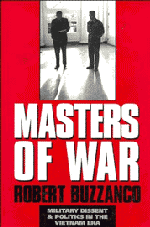Book contents
- Frontmatter
- Contents
- Acknowledgments
- List of Abbreviations
- 1 Introduction: Losing Battles and Winning Wars
- 2 Prologue to Tragedy: U.S. Military Opposition to Intervention in Vietnam, 1950–1954
- 3 Preparing for and Avoiding War: Military Affairs and Politics in Vietnam and the United States, 1955–1960
- 4 Pinning Down the President: JFK, the Military, and Political Maneuvering over Vietnam, January-October 1961
- 5 The Best and Worst of Times: The U.S. War against Vietnam, October 1961–November 1963
- 6 “Seeing Things Through in Vietnam”: LBJ, the Military, and the Growing U.S. Commitment to Vietnam, November 1963-December 1964
- 7 Hope for the Best, Expect the Worst: U.S. Ground Troops Enter the Vietnam War, January-July 1965
- 8 War on Three Fronts: U.S. Forces versus the Viet Cong, Westmoreland versus the Marines, and Military Leaders versus the White House, July 1965-December 1966
- 9 “The Platform of False Prophets Is Crowded”: Public Hope and Private Despair in Vietnam, 1967
- 10 The Myth of Tet: Military Failure and the Politics of War
- 11 Conclusion: Bringing It All Back Home
- Epilogue: “This Is a Real War”: Military Dissent and Politics after Vietnam
- Bibliography
- Index
5 - The Best and Worst of Times: The U.S. War against Vietnam, October 1961–November 1963
Published online by Cambridge University Press: 05 August 2012
- Frontmatter
- Contents
- Acknowledgments
- List of Abbreviations
- 1 Introduction: Losing Battles and Winning Wars
- 2 Prologue to Tragedy: U.S. Military Opposition to Intervention in Vietnam, 1950–1954
- 3 Preparing for and Avoiding War: Military Affairs and Politics in Vietnam and the United States, 1955–1960
- 4 Pinning Down the President: JFK, the Military, and Political Maneuvering over Vietnam, January-October 1961
- 5 The Best and Worst of Times: The U.S. War against Vietnam, October 1961–November 1963
- 6 “Seeing Things Through in Vietnam”: LBJ, the Military, and the Growing U.S. Commitment to Vietnam, November 1963-December 1964
- 7 Hope for the Best, Expect the Worst: U.S. Ground Troops Enter the Vietnam War, January-July 1965
- 8 War on Three Fronts: U.S. Forces versus the Viet Cong, Westmoreland versus the Marines, and Military Leaders versus the White House, July 1965-December 1966
- 9 “The Platform of False Prophets Is Crowded”: Public Hope and Private Despair in Vietnam, 1967
- 10 The Myth of Tet: Military Failure and the Politics of War
- 11 Conclusion: Bringing It All Back Home
- Epilogue: “This Is a Real War”: Military Dissent and Politics after Vietnam
- Bibliography
- Index
Summary
General, I don't think you understand. I didn't come for a briefing. I came to tell you what we have decided.
Alain EnthovenHaving decided to maintain and increase the American commitment to the RVN but defer on combat troop deployments, John Kennedy would spend the next two years of his presidency, and his life, groping for an effective response to the southern rebellion and political turmoil in Saigon. Despite political and military problems recognized by all, the president would authorize an 800 percent increase in U.S. advisors to Vietnam, extend American participation in operations against the VC, begin to consider troop withdrawals because of perceived improvements in the fight against the insurgency, and ultimately help coordinate the overthrow of the Diem government. By November 1963, the United States would be well on its way toward creating and intervening in a major war in Southeast Asia.
At the same time, U.S. military officials would express conflicting views regarding Vietnam policy. Service leaders generally supported the president's expansion of the American role in Vietnam, especially after Kennedy replaced holdover military leaders with his own generals and because of the president's embrace of military Keynesianism, with projected defense budget increases of $17 billion over five years. Optimism grew within military circles with General Paul Harkins's arrival in Saigon in 1962, just as U.S. resources were pouring into the RVN and American aircraft appeared to be containing the VC.
- Type
- Chapter
- Information
- Masters of WarMilitary Dissent and Politics in the Vietnam Era, pp. 115 - 152Publisher: Cambridge University PressPrint publication year: 1996



